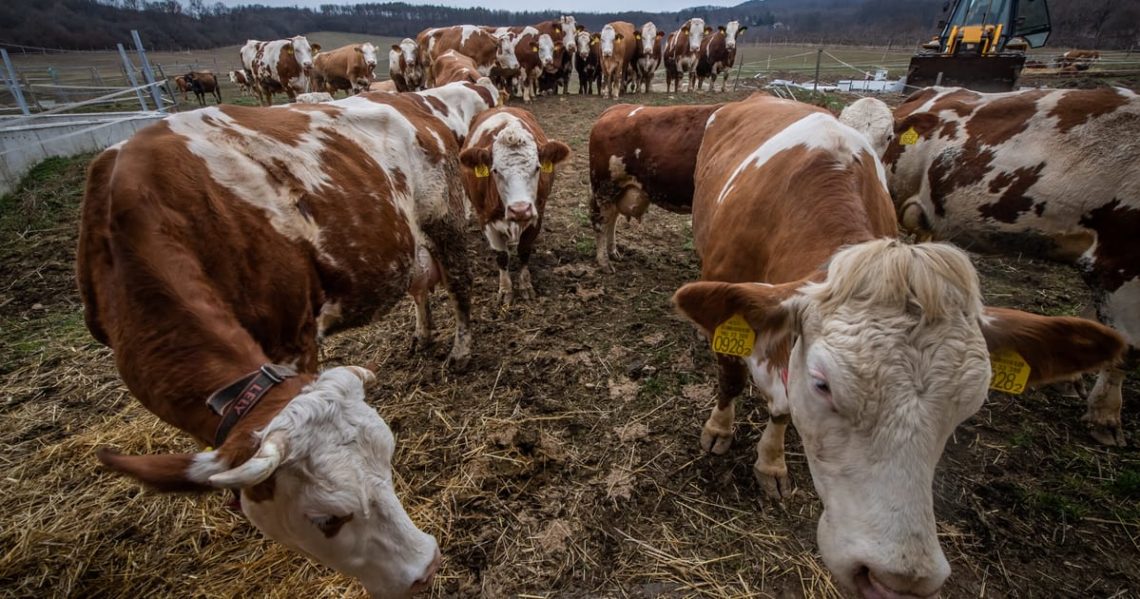BRUSSELS — Hungary and Slovakia have both suggested that ongoing outbreaks of highly infectious foot-and-mouth disease (FMD) could be linked to bioterrorism — without presenting any supporting scientific evidence.
Hungarian authorities detected an FMD case in early March at a cattle farm on the border with Slovakia, in the country’s first outbreak in 50 years. Since then, animals at three more Hungarian farms and six Slovak farms have tested positive for the virus, prompting authorities to vaccinate the herds to reduce any further spread before emergency culling. Slovakia has declared a state of emergency, imposed border restrictions, and set up a surveillance center staffed by police, firefighters and the military from both the ground and air. “According to my current knowledge, there is no evidence supporting this scenario,” said virologist Jiří Černý from the Czech University of Life Sciences in Prague of the bioterror claims. “This does not mean we should ignore the possibility of alternative explanations, but rather that these should be carefully investigated, not assumed without evidence. It does not mean that a bioterrorist attack is a likely explanation,” he said.
FMD is the most feared animal disease in the world. Highly contagious in ruminants like cows, pigs, sheep and goats, it rarely kills livestock but instead causes fever, loss of appetite, and blisters in the hooves and mouth that require the whole herd to be culled — and exclusion zones to be imposed to prevent its spread.
The disease has the potential to devastate animal agriculture. An outbreak in the United Kingdom in 2001 caused an agricultural and tourism crisis costing more than €15 billion. Authorities slaughtered more than 6 million animals in efforts to eradicate the disease.
Germany also reported an outbreak in January that has since been contained.
Černý added that the virus was likely transmitted by accident and should be treated as such until proven otherwise.
“The virus can be carried on contaminated shoes, clothing, equipment, or even bird feathers from migratory species. Similar cases of unintentional introduction have been documented in the past,” he told POLITICO.
‘Engineered attack’
Hungarian Prime Minister Viktor Orbán’s chief of Cabinet, Gergely Gulyás, last Thursday became the first official to suggest the outbreaks could be the result of a biological attack.“At this stage, we can say that it cannot be ruled out that the virus was not of natural origin, we may be dealing with an artificially engineered virus,” Gulyás said at a press briefing, adding that the suspicion was based on verbal information received from a foreign laboratory whose findings have not yet been proven.Gulyás insisted that experts investigate any possibility of an “engineered attack.”Slovak Agriculture Minister Richard Takáč jumped on that bandwagon on Friday when he said in a YouTube interview that Slovakia is considering a similar possibility.“There are various speculations, various questions that we here in Slovakia are asking ourselves. The same questions are being asked by the European Commission as well,” Takáč said.“I can confirm that in official documents following meetings at the European level, bioterrorism is mentioned as one of the possible scenarios. That someone may have brought the virus here with a certain intent. It is the subject of an ongoing investigation,” he said.The Commission declined to comment on Takáč’s claim, but said it is working to figure out where the virus came from.
“We have no comment on this. The Commission is working closely with the member states to try to find the origin of the outbreak. Virus isolation and genome sequencing are ongoing at the EU reference laboratory and may help clarify the origin. We cannot speculate on either the timing or the outcome of that work,” a Commission spokesperson told POLITICO.A number of countries are taking precautionary measures, from neighboring Austria and the Czech Republic stepping up border checks, to the United Kingdom banning personal imports of meat and dairy products from the EU.
The post Bioterror? Hungary and Slovakia float unconfirmed theory on foot-and-mouth outbreaks appeared first on Politico.




